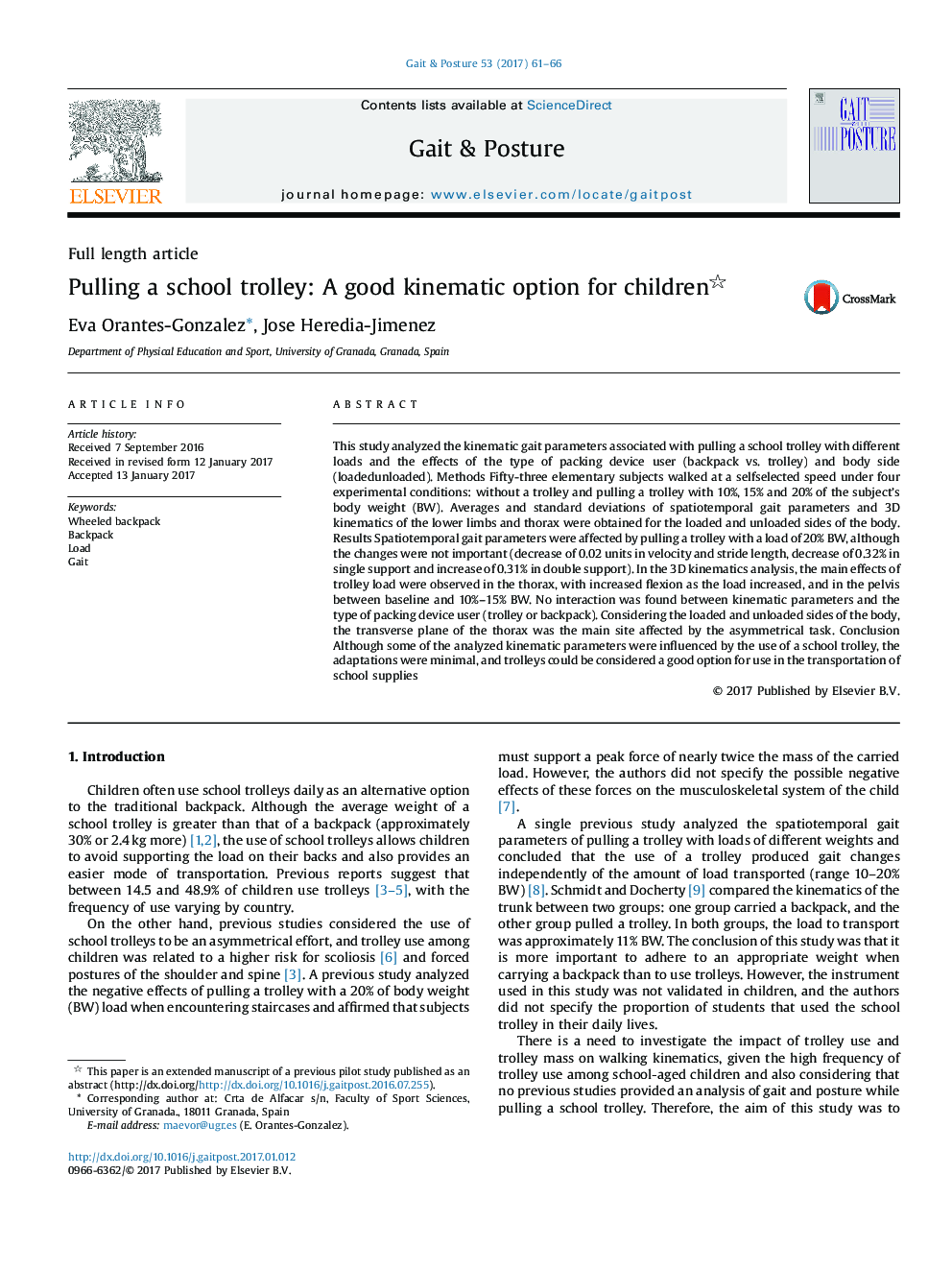| Article ID | Journal | Published Year | Pages | File Type |
|---|---|---|---|---|
| 5707751 | Gait & Posture | 2017 | 6 Pages |
Abstract
This study analyzed the kinematic gait parameters associated with pulling a school trolley with different loads and the effects of the type of packing device user (backpack vs. trolley) and body side (loadedunloaded). Methods Fifty-three elementary subjects walked at a selfselected speed under four experimental conditions: without a trolley and pulling a trolley with 10%, 15% and 20% of the subjectÌs body weight (BW). Averages and standard deviations of spatiotemporal gait parameters and 3D kinematics of the lower limbs and thorax were obtained for the loaded and unloaded sides of the body. Results Spatiotemporal gait parameters were affected by pulling a trolley with a load of 20% BW, although the changes were not important (decrease of 0.02 units in velocity and stride length, decrease of 0.32% in single support and increase of 0.31% in double support). In the 3D kinematics analysis, the main effects of trolley load were observed in the thorax, with increased flexion as the load increased, and in the pelvis between baseline and 10%-15% BW. No interaction was found between kinematic parameters and the type of packing device user (trolley or backpack). Considering the loaded and unloaded sides of the body, the transverse plane of the thorax was the main site affected by the asymmetrical task. Conclusion Although some of the analyzed kinematic parameters were influenced by the use of a school trolley, the adaptations were minimal, and trolleys could be considered a good option for use in the transportation of school supplies
Related Topics
Health Sciences
Medicine and Dentistry
Orthopedics, Sports Medicine and Rehabilitation
Authors
Eva Orantes-Gonzalez, Jose Heredia-Jimenez,
